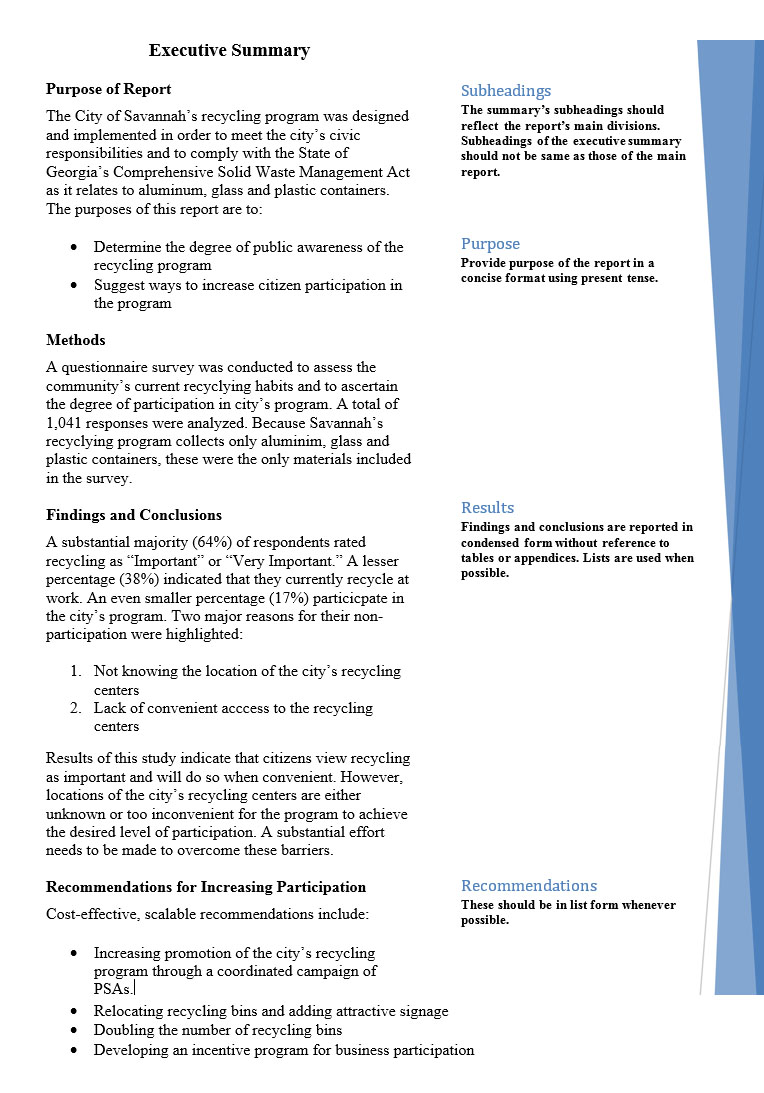
Writing the Executive Summary
- purpose
- problem
- methods of analyzing the problem
- results of analysis
- recommendations
Therefore, your summary is key to the success of your proposal and should reflect these characteristics:
 |
Perfect Miniaturization. The executive summary should contain the same sections in the same order as the full report. |
 |
Major Findings Only. Because it is a distilled version of the full report, the summary should include only the proposal's principal points and major evidence. Most charts, tables, and deep-level analysis are reserved for full proposal. |
 |
Proportional. The executive summary should typically be only 10% the length of the full proposal it distills. Therefore, the executive summary for a 10-page proposal would be 1 page or less. |
 |
Stand Alone. The summary should be written in a way that it can be read as a stand-alone document. Before submitting it, allow a test subject to read the summary. The subject should be able to give to you the basics of the full proposal from one reading of the summary. |
 |
Flawless. Like a job resume, even the most minor error of proofreading or grammar can spell rejection. |
SAMPLE EXECUTIVE SUMMARY:
